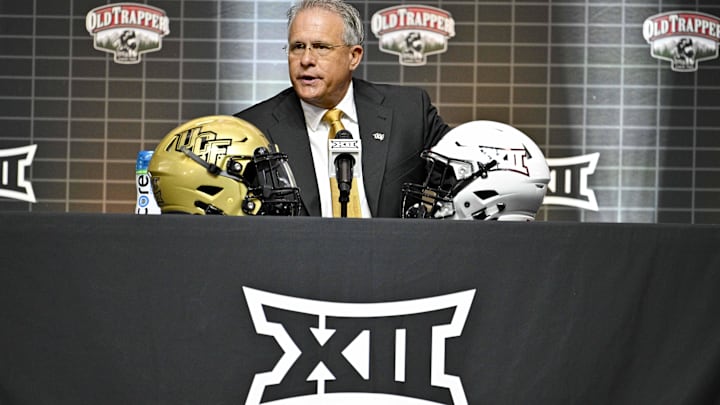This time last year, UCF was getting ready to make their "Big" move to a new conference. On July 1, 2023, UCF officially became a member of the Big 12, and they did it just in time.
What do I mean by that you ask?
Well, due to recent developments in the NCAA, basically the House vs. NCAA settlement, the world of college sports is changing forever, and UCF got on the right side at the right time.
A lot of people say the move to the Big 12 was to get better recruits, play tougher opponents, or it was all about the money. While that last reason is probably the biggest one, it is also the most important one.
With the Pac-12 essentially fading out of existence with so many members jumping ship for other conferences, the Power 5 now becomes the Power 4 with the SEC, Big Ten, Big 12, and ACC. Of the 32 Division I conferences, it seems that the NCAA really only cares about now four conferences.
So why is it so important that UCF jumped ship from the American Athletic Conference when they did?
That is an easy answer, and it all comes back around to one simple answer.
Money.
In the American Athletic Conference, UCF would make around $8 to $9 million annually in media-only revenue. However, now in the Big 12, they make around $18 million annually and that number is set to jump to $36 to $40 million.
The House vs. NCAA settlement is sending shockwaves through the NCAA and schools in power conferences are feeling pretty good about themselves right now, but schools in the other 28 conferences are wondering what they are going to do to survive.
This settlement is creating a clear dividing line between the four power conferences and the rest of the Division I conferences. With this new revenue-sharing model in place, the Power conferences will be able to share as much as $22 million with their athletes, while the smaller conference schools may have to cut certain athletics just to get by to pay their athletes.
Did UCF see this coming and realize they needed to hook their wagon to a Power conference before everything hit the fan? Realistically, we will never know that, but the writing on the wall is clear.
UCF made the best decision for themselves and now they will reap the benefits of that decision. Just a year ago, the Knights were advocating for the AAC to become a "Power 6" conference, carrying flags onto the field and court, saying their conference was just as good as any other.
Now, with every athlete having an "XII" on their jersey, the talk of "Power 6" seems to have disappeared from the Knights's vocabulary.
Their time in the AAC certainly shapes the Knights's future, but their rise to a Power conference after just starting a football program in 1979 is an impressive one.
Hats off to the Knights for seeing what was happening and getting in the right spot at the right time.
